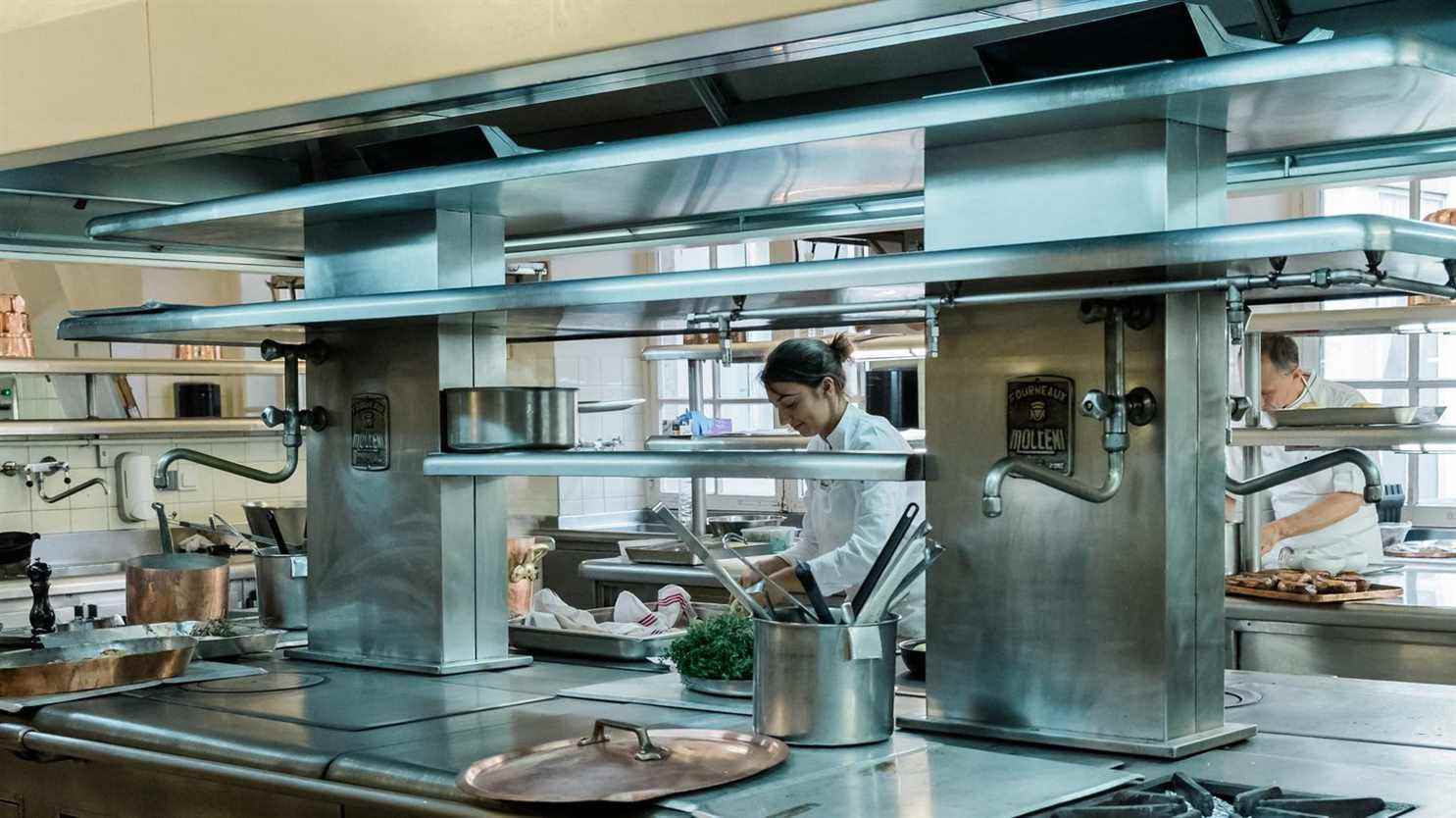The cinema seized the kitchens of the Élysée with relish, in the film by Christian Vincent, The flavors of the palace, with Catherine Frot as cook and Jean d’Ormesson as President of the Republic. The story is true. François Mitterrand had chosen Danièle Mazet-Delpeuch, who had opened one of the first tables d’hôtes in Périgord, to be his personal cook.
The adventure lasted two years, an exception. Because all the catering for the Head of State and his teams remains in the hands of the Élysée brigade headed today by Fabrice Desvignes, best worker in France and Bocuse d’Or, a brigade of around thirty people with the apprentices.
Nearly one hundred thousand meals are prepared each year at the Élysée, in a 500 square meter kitchen in the first basement. A veritable palace within a palace, with a daily ballet between the arrival of the goods in the morning – the stewards check their traceability and the cooks their quality – and their distribution in the different spaces to be then worked on throughout the day.
It goes without saying that at the President’s table only products from the French terroir are served. Everything is prepared day by day, from the reception cocktails, to the trays for the on-call staff, through the gala dinners or the private meals of the President of the Republic, but also the food on board in the event of travel. official plane or helicopter, which is then supported by the Air Force.
In the center of the U-shaped space, rebuilt at the time of Pompidou who had had enough of lukewarm eating, are the pastry and kitchen stations with, suspended above the worktops, a battery of copper saucepans shiny.
At the Élysée, there is no menu. With the exception of the head of state, no one chooses what they eat. From the general secretary to the agents, the meals are decided by the kitchen teams according to the needs of the day and the stocks in the fridges. Another particularity, unlike a classic restaurant, there are no dedicated stations, for meat or fish for example, but the teams are formed according to the services.
For prestigious galas, we put the small dishes in the big ones, Sèvre crockery and floral decoration. It is for Queen Elisabeth that the red carpet has been rolled out most often, and of course each president has his little Proust madeleines, kept secret in the kitchens of the Élysée. One thing is certain, gastronomy has often served diplomacy, as Talleyrand has proven, and as Bossuet so rightly writes: “It is at the table that we govern”.
